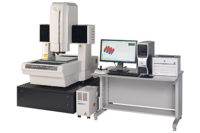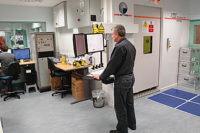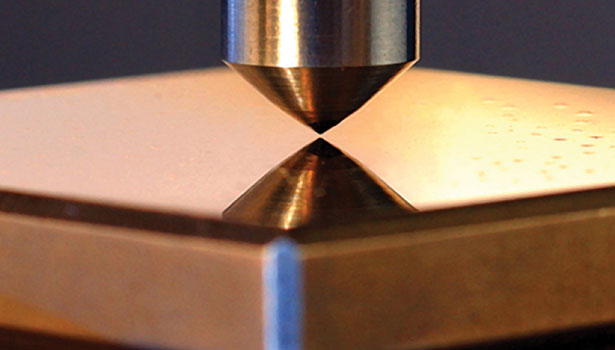Market Analysis
Hardness Testing: Market Analysis 2013
Market upbeat despite facing headwinds.






When Frost & Sullivan previously analyzed this market for Quality’s 2012 issue on hardness testing, the market was undergoing a period of transition. Buoyed by the recovery of its key end user markets, the material testing industry began to stabilize. After the 2009 downturn, with the market declining by close to 30 percent, and events occurring such as the Fukushima disaster in Japan and Europe’s sovereign debt crisis, the market was finally showing signs of getting back to pre-recession levels during the latter half of 2011 and early 2012.
This article will aim to provide an insight into the current state of the hardness testing market and recent global market trends that have impacted this industry over the past year.
Market Overview—What Crisis?
The global financial climate is still far from stable with the International Monetary Fund lowering its estimates for global growth in 2013 to 3.3 percent, creating a palpable sense of uneasiness and uncertainty across the world. But this seems to have very little impact on the hardness testing market after a strong performance in 2012.
For example, Indentec had a “record year” in 2012, according to John Piller of Indentec, Zwick Roell’s hardness testing division.
“We sold more machines in 2012 than any other year and we have a history of over 40 years,” said Piller. Indentec, headquartered in the United Kingdom, is expected to feel the pinch of the ongoing Euro zone crisis and moderate growth of the U.S. economy amid lackluster consumer spending and a weak business environment, similar to all other hardness testing companies located in Europe.
“I think 2013 might be more challenging purely because of the uncertainty in the Euro and weakness in the U.S.,” said Piller. “But [to be honest] it’s very hard to predict. Although the numbers of hardness testers sold in Europe may be less than last year, we have less than 10 percent of the European market, so we have plenty of other options.”
A similar viewpoint was echoed by Gregory Favaro, Marketing Manager for CSM Instruments.
“The Eurozone crisis is mostly a problem of the exchange rate more than anything else, especially due to the strong Swiss Franc,” said Favaro. “At CSM Instruments we have different products and we also work across different industries. Typically, if we do have a crisis in Europe, the first industry to be impacted is the automotive industry and we will be able to cope with that with our different instruments and different field of applications. As a result, we have been growing at [a rate of] 16 to 18 percent year-on-year.”
Regional Growth Trends
With emerging economies growing faster, a strategy has been adopted by most leading vendors in the material testing market to approach these areas. Frost & Sullivan’s analysis of the material testing market indicated that Asia Pacific would account for the highest revenues in 2012 with close to 38 percent of global revenue coming from this region. Asia Pacific is not only the biggest market for material testing equipment vendors, but it also has the highest growth rate. Vendors recognize the importance of this region, particularly in India and China, and are working towards penetrating this market by strengthening their sales and distribution networks. With Asia Pacific becoming the manufacturing hub of the world, contributions from traditionally strong markets, such as North America and Europe, have gradually declined.
Companies like Indentec also see strong opportunity from Russia. As a matter of fact, Indentec will be presenting at a seminar in the city of Kaluga, which is considered the automotive hub of Russia with a number of foreign companies opening assembly plants in the area.
“We go to Russia annually and will be in Kaluga this year, which has a high proportion of automotive manufacturers and second and third tier suppliers,” said Piller. As such, “our seminar this year will be focused on the automotive industry.”
Automation to Continue Driving Demand
Zwick is recognized as the market leader in automated and robotic testing systems. According to Piller, at least 50 to 60 percent of their products have an element of automation. The need for fully-automated test systems, which includes the use of robotics for specimen handling, is a growing trend, especially in industries such as steel and aerospace where reduced operator influence, repeatability, and accuracy are critical.
“We’ve done some crazy things like 25,000 tests on a welded sample. That’s a 10 day test, 24 hours a day to perform a very detailed analysis on a structural part that goes in a nuclear submarine. Without full automation that’s completely impossible,” said Piller. “We can do things today that were impossible three to four years ago.”
Micro- and Nano-Testing—The Future Direction of Material Testing
One of the biggest challenges faced by the industry (but also potentially one of the biggest opportunities) is testing at micro and nano ranges.
“There is a trend towards smaller test forces and smaller indentations. That’s because people are generally testing smaller components, computers, mobile phones, lap tops and the quality requirements are ever increasing,” said Piller.
CSM Instruments, headquartered in Switzerland, has mastered this craft and is one of the most recognized names in nanoindentation testers, scratch testers and tribometers.
“CSM stands for coating surface measurements,” explains Favaro. “Fifteen to 20 years ago techniques such as nanoindentation, scratch testing and tribology were techniques reserved for the academic field. Now we are seeing more industries asking for the same instruments because we have a lot of coatings in the industry and small particles which need to be analyzed.”
However, this is a market segment that requires a great deal of technical expertise, as well as a significant financial investment. As technology has evolved, traditional material testing vendors have kept a close eye on this market. MTS Systems Corp dabbled in the nanoindendation market before it sold its Nano Instruments business unit to Agilent Technologies in 2008. Also, Zwick recently acquired a company in Germany that specializes in micro and nano testing instruments.
“In 2011 we purchased a specialist nano hardness company called ASMEC, so we clearly see a trend toward nano testing,” said Piller. “I think the traditional technologies and methods of hardness testing are valid and will continue. But the growth will be in micro and nano, which is a highly specialist area of testing.”
Most hardness testing vendors will testify that breaking into this market can be complicated. Material testing at a small scale places relatively stringent demands on the systems starting from force and displacement measurement to holding the specimen in place for testing. Even for industry leaders such as CSM instruments, staying ahead of the technology curve can be a challenge.
“The challenge for a company like us is to keep producing state of the art equipment, which is why we spend 20 to 25 percent of our revenue annually on R&D,” said Favaro. “About 10 years ago, coating thickness was approximately 5-10 microns, now it’s below 2 microns and in a few years it could be less than 200 nanometers, which is already the case in industries such as optics, automotive parts and electronics.”
The coatings industry has been one of the biggest drivers for the micro and nano hardness tester market. The use of coatings has spread across different industries from electronics and automotive to ceramics and glass. Today coatings have a wide range of applications, from reducing carbon emissions of engines to improving hardness of surfaces, the need to obtain data on the mechanical properties of these coatings have never been more critical.
Conclusion
The hardness testing market is currently poised for a stable growth forecast. Despite worrying trends and predictions, avenues for growth continue to drive innovation. In addition to niche opportunities, such as micro and nano testing, demand from traditional market such as automotive, primary metals and aerospace will sustain growth for the hardness testing market in the short term.
Looking for a reprint of this article?
From high-res PDFs to custom plaques, order your copy today!







